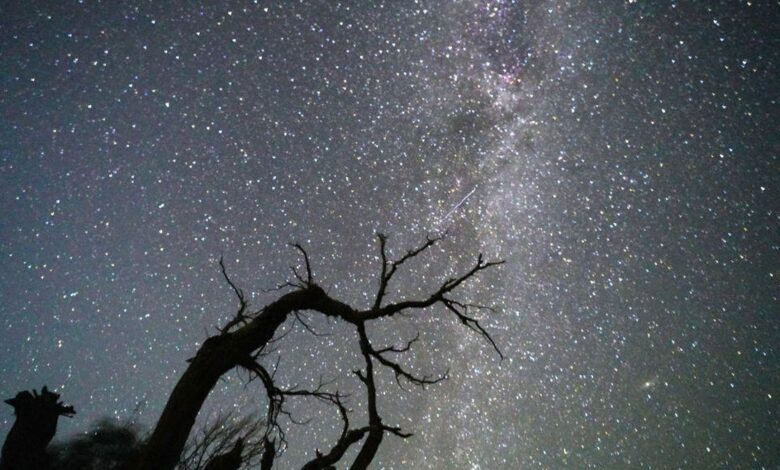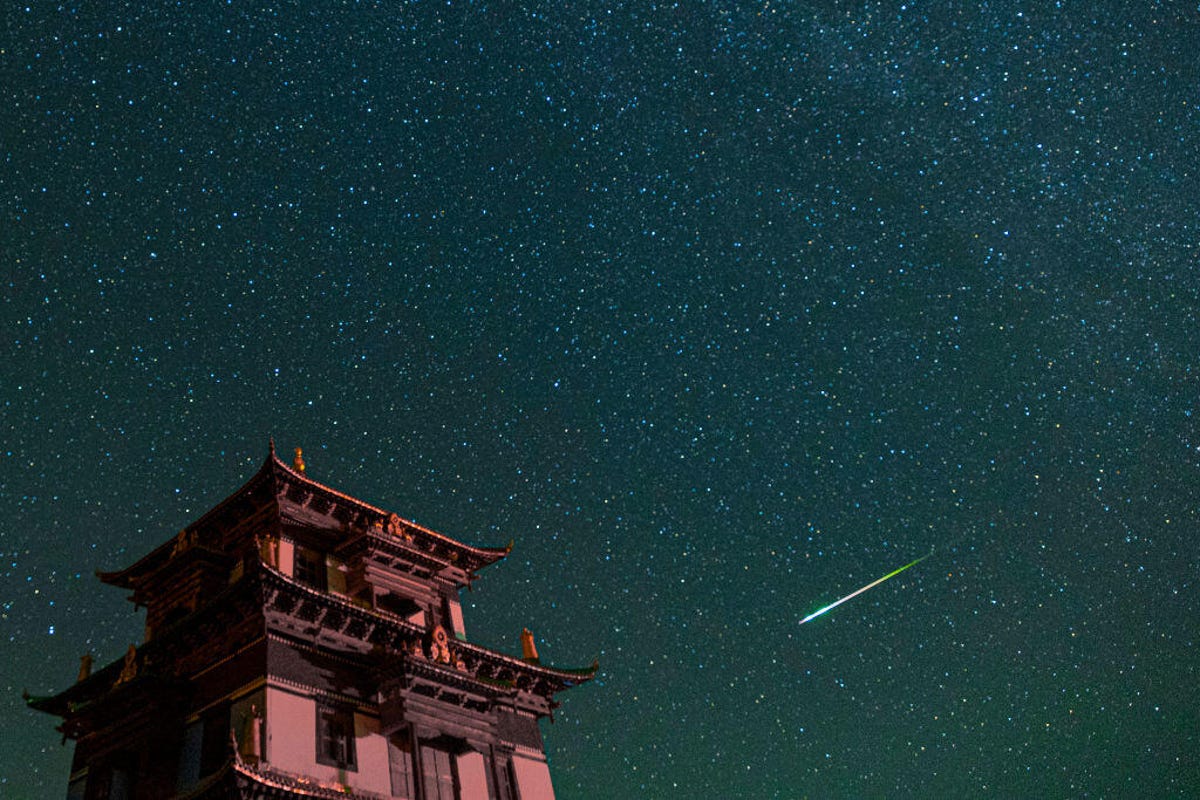The Perseid meteor shower peaks in August: Here’s how to see it


From solar eclipses to multiple Northern Lights, stargazers have had plenty of reasons to get outside and take in the skies this year. The show is far from over, with a parade of planets happening later in August and a once-in-a-lifetime nova explosion looming at any moment. While you wait, the Perseid meteor shower is nearing its peak from August 11-13.
Perseids are one of the most popular and consistent celestial events to grace the night sky, and get their name from the fact that the meteors appear from the general direction of the constellation Perseus. The meteors are produced by the Swift-Tuttle Comet when the Earth passes through the comet’s tail, burning up the various chunks of ice and rock in the atmosphere.
This year, the meteor shower began on July 14 and will last until September 1. However, it peaks around the same three-day period each year.
Read more: This is how you see 6 planets in the sky at the same time during the upcoming Planet Parade
Meteoric activity will be more or less random until the shower reaches its peak. Once it reaches its peak, the sky will light up with somewhere between 50 to 75 meteors per hour according to the American Meteor Society — though NASA predicts there could be as many as 100 an hour. The meteors, first called meteoroids, are traveling at more than 130,000 mph when they hit Earth’s atmosphere, and then the name changes to meteor.
The Perseids have already appeared in at least one meteor shower this year. The Southern Delta Aquariids and Alpha Capricornids reached their meteor shower peak in late July, and since the Perseids are active during that time, they joined together to form a rare triple meteor shower. Since both of the other meteor showers ended on August 21 and 15, respectively, it’s not unlikely that one of the meteors you see during the Perseids actually came from one of the other two meteor showers.

A meteor streaks across the sky during the 2023 Perseid meteor shower.
Where are the Perseids visible?
Most of planet Earth will be able to witness the Perseids. That includes the entire Northern Hemisphere and the northern half of the Southern Hemisphere. Any further south and you could run into problems.
In short, wherever the constellation Perseus is visible in the night sky, you can see the Perseid meteor shower.
If you’re wondering where that will be in the night sky where you are, a good resource to try is Time and date. Enter your location and the date. Then use the tool’s slider to change the time to around midnight or 1:00 a.m., and then scan the sky for Perseus. Then, simply look in that direction on the prescribed dates. For example, in central Ohio, Perseus will be near the horizon in the northeastern part of the sky.
Read more: Don’t miss out on seeing a unique cosmic explosion from your own backyard
Heaven tonight (Android, iOS) is another good mobile app for this purpose. Enter your location and fast forward to August 11-13. From there, find Perseus in the sky and note its direction and how close it is to the horizon. Look in that direction on the given nights to see meteors.
What is the best time to see the Perseid meteor shower?
Predictions on the best day vary. NASA says the best night will be August 13, while EarthSky says August 12 and the American Meteor Society says the evening of August 11th to 12th is the best time. So, we’ll split the difference here and recommend seeing it on all three nights. It should be a pretty good show no matter which night you choose.
If you want the best chance of seeing lots of meteors, the best time is between midnight and 5 a.m. It’s darkest then. For most of the Northern Hemisphere, the moon should be also somewhere between midnight and 1:30 amso that it does not drown out the meteors with its own light.
Do I need any special equipment to see the Perseids?
No. The meteor shower is bright and consistent enough to be seen with the naked eye when looking up at the night sky. Binoculars can help, but telescope users run the risk of missing meteors because they are focused on too small a patch of sky. For those looking to take photos of the event, a smartphone camera or a more professional camera will be able to see the meteors just fine.
Follow the standard rules for viewing things in the night sky. You want to get as far away from light pollution as possible, and of course, weather plays a role. The moon shouldn’t be a problem, as the American Meteor Society says the moon should be low or below the horizon by the time the cosmic fireworks begin.
Time Magazine Estimates that suburbanites see about 10 an hour if they’re lucky, while people in big cities might not see any at all. So the closer to the city you are, the better it is to drive out of town to see the storm.
What causes the Perseid meteor shower?
The Swift-Tuttle comet orbits the sun once every 48,700 days, which is 133⅓ years. The comet is one of the larger ones in our solar system with a radius of 16 miles, which NASA says it’s nearly twice as big the estimated size of the object that might have killed the dinosaurs.
As the comet orbits the sun, it leaves behind a tail of dust, ice, and debris. About once a year, Earth’s orbit passes right through this tail, leaving a trail of comet debris. The pieces of debris that eventually burn up in Earth’s atmosphere are called meteors, and the debris field that Earth flies through is called the Perseids.
The American Meteor Society has a neat graphical display that shows how it all works. Swift-Tuttle has a huge debris field that it is constantly flying through and the Earth’s orbit takes us through it every year at about the same time like clockwork.




